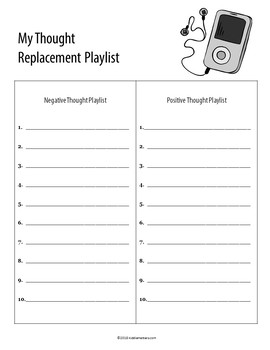
Another simple resource, this one-page worksheet serves as an appendix of questions focused on challenging automatic thoughts. It includes a list of questions that users can use to dispute negative thoughts , and works well with any of the other Automatic Thoughts exercises on this page. Teach your clients to challenge their negative thoughts and self-talk using this CBT worksheet.
In this worksheet your client will be asked to take a step back and consider their situation and thoughts from a new perspective, such as that from a friend. Each question is designed to lead your client to look at their negative thoughts more objectively. What am I thinking or imagining? Psychoeducation is interspersed with examples, and opportunities for your clients to write about their own experiences. How strong is the feeling?
Because irrational thoughts can be difficult to pin down without practice, we suggest working closely with your client as they make their way through this worksheet. This worksheet teaches a client how to use logic to challenge anxious thoughts. The goal of working through this worksheet is to develop the habit of challenging anxious thoughts with reality and logic. Construct healthy alternative and balanced thoughts. A thought challenge or record sheet is normally printed in a table of several columns.
This page contains the same information as the column sheet in a different format. Someone who regularly receives positive feedback at work might feel that they are horrible at their job because of one criticism. Their irrational thought about job performance will dictate how they feel about themselves. Answer the following questions to assess your.
The term cognitive restructuring refers to the process of challenging , and changing , irrational thoughts. Challenging irrational thoughts can help us change them. Socratic questioning is one technique to encourage this process. By learning to question your own thoughts using a CBT technique called cognitive restructuring, you can correct many of these distortions. The Cognitive Restructuring: Decatastrophizing CBT worksheet includes prompts that will help your clients bring their thoughts into focus, and examine them for irrational thinking.
This tool is helpful for teaching how thoughts can be questioned and amended. Automatic thought I must be really stupid to have these distorted thoughts. Possible answer Stupidity is one possible reason.
When I look at myself as a whole, there’s not much evidence that I’m stupid. I have these thoughts because I’m depressed. When I’m feeling better, I think quite differently. Get thousands of teacher-crafted activities that sync up with the school year.
Instructions “We have spent some time identifying your negative automatic thoughts , and we have talked about how thoughts aren’t facts even when they feel like they are true. Thought records exist in multiple variants, depending on the needs and abilities of the client. It uses the metaphor of a court trial, which makes the challenge of the negative thought explicit and concrete. Negative situations trigger ANTs, and those ANTs can cause patients to perceive the situation as more negative than it actually is, which causes them to react. The worksheets allow an individual to imagine the worst of a situation and the worst thing it could do to him.
Cognitive behavior therapy (CBT) is a popular form of psychological therapy that works with our thoughts , feelings, and behaviors. CBT is an integration of principles from behavior therapy with theory and methods from the cognitive therapies developed by Aaron Beck and Albert Ellis. You or your client can use this space to write down a specific thought , usually, one you suspect is destructive or irrational. The subconscious part consists of things that we are not fully aware of.

This is a thought record worksheet which guides clients through the process of identifying automatic thoughts , helping them understand the links between thoughts and emotions, challenging the automatic thought by examining evidence for and against, and generating more realistic alternatives that give a ‘balanced’ appraisal of the situation. The goal of this worksheet is to learn how to challenge negative patterns in thought and train yourself to see situations as objectively as possible. Thought challenging records help people to evaluate their negative auto. Problematic Patterns F. Alternative Thought (s) Describe the event, thought or belief leading to the unpleasant emotion(s).
As you can see, there are columns to fill-out: Thoughts , Feelings, Cognitive Distortions, and Challenges. The relationship between thoughts and feelings: The first two columns are to track how thoughts contribute to feeling states. It enables the individual to focus on positive aspects of the situation to prevent negative self-talk and soothe himself.
After you have identified the thought , the worksheet instructs you to note the emotions that ran through your mind along with the thoughts and images identified. Ask yourself what emotions you felt at the time and how intense the emotions were on a scale from (barely felt it) to (completely overwhelming).
No comments:
Post a Comment
Note: Only a member of this blog may post a comment.